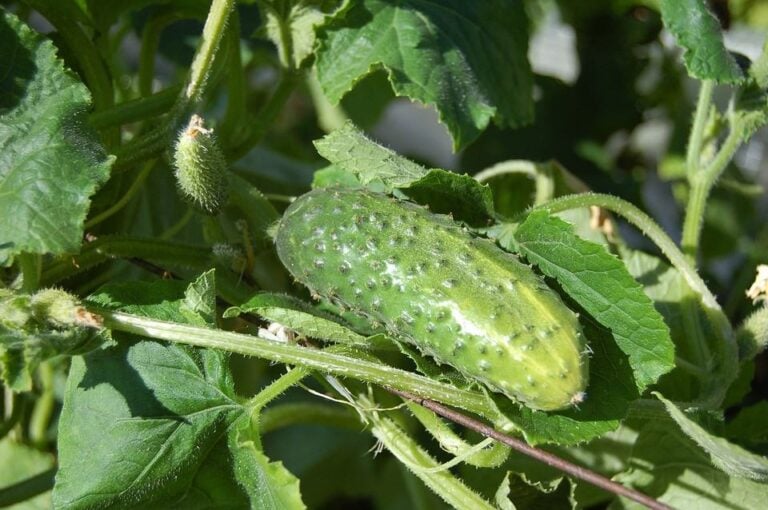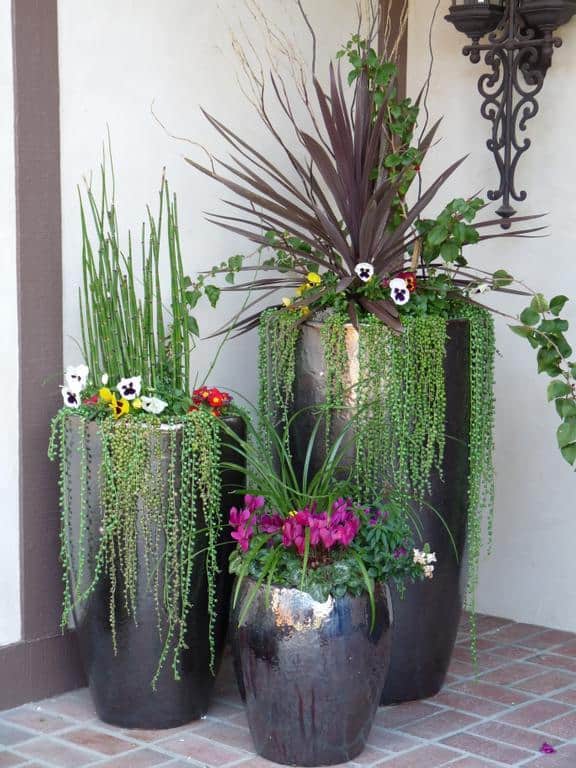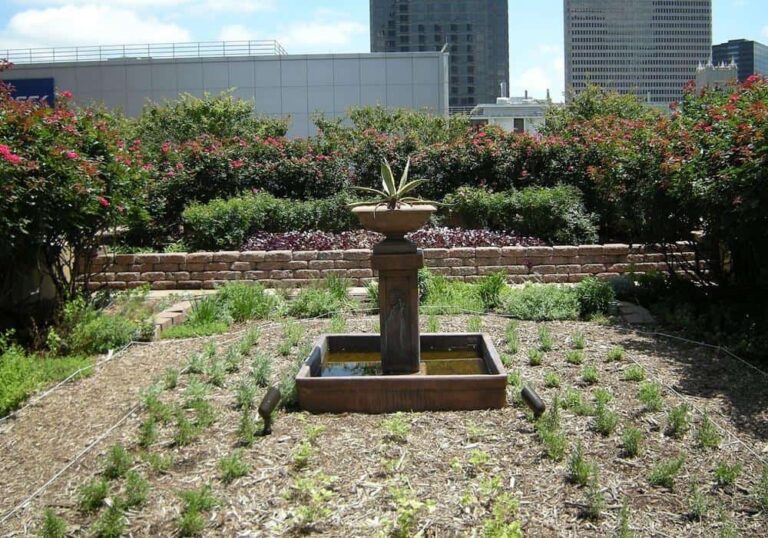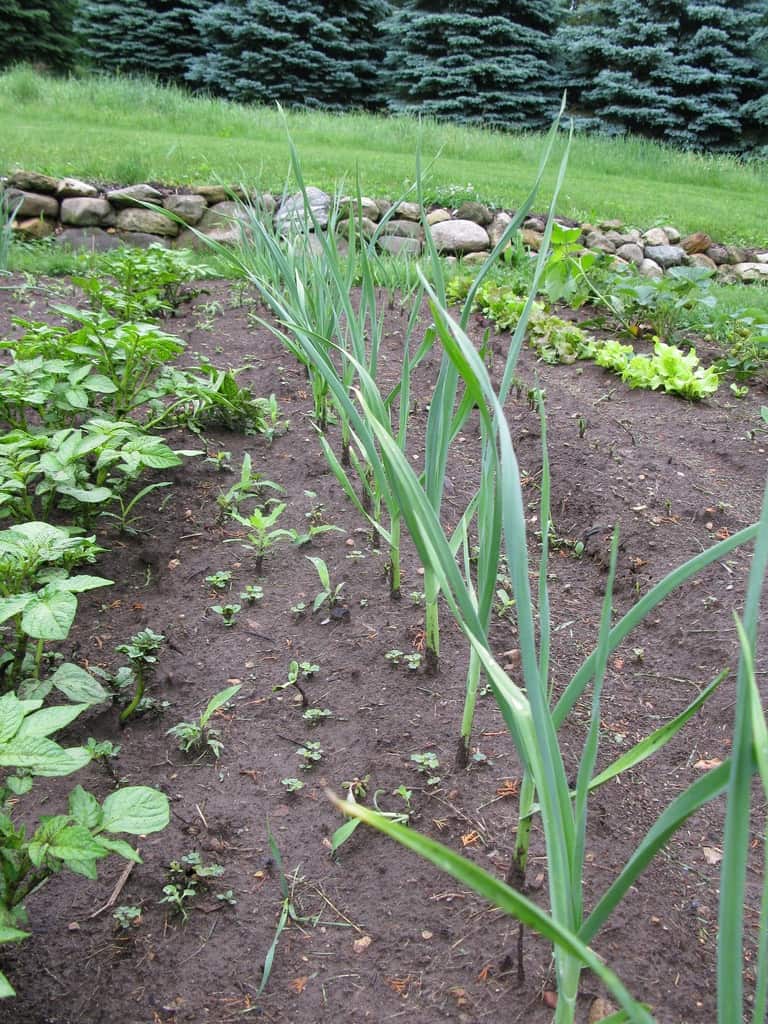Kale Pests & Diseases (How to Avoid Them)
Kale pests can be annoying, but there’s hope. The plant is particularly attractive to caterpillers including the the cabbage looper and cabbageworm. Both like to eat the leaves of the plant and will quickly leave a plant bald if not removed or destroyed. Aphids are another common kale pest.
The plant is also subject to fungal and bacterial diseases, which can wipe it out. Although you can treat disease and pests, often the best way to deal with them is to keep them from attacking your kale in the first place.
Insect Pests
It turns out that people aren’t the only living beings that like the taste of kale. A number of insect pests will quickly turn your kale plantings to a bunch of defoliated stems if you don’t keep a close eye out.
The exact type of pest that can attack your kale depends on where you live. Some pests are more common in some parts of the world than in others. Once you know what pests are out there and what they look like, you can take steps to protect your plants.
Cabbage Butterflies and Cabbage Worms
If you see small white butterflies fluttering about your garden, you can expect to see small, green worms climbing up and down your kale plants pretty soon after that. Cabbage worms, sometimes called imported cabbage worms, blend easily into the kale that they are eating, so you might not notice their presence until they’ve done a significant amount of damage to your plants.
Along with eating your kale leaves down to the stems, cabbage worms will also leave droppings throughout your plants. According to the Old Farmer’s Almanac, those droppings will easily contaminate any vegetables you were growing for yourself.
You can deal with cabbage worms in two ways. You can try to prevent an infestation from happening. If one does occur, you can take action to eliminate the worms from your plants.
One way to keep cabbage worms away is use row covers over your plants, particularly when they are seedlings. You can also try to catch the cabbage butterflies, using sticky traps. You also run the risk of catching helpful insects when you put out sticky traps.
Another option is to remove any cabbageworm eggs before they have a chance to hatch. Since the eggs are very tiny, finding and removing them can be a big challenge.
If you do notice the tiny green worms climbing up your kale plants, you can control their numbers in a few ways. The simplest option is to pick the worms off of your plants and dispose of them. Some people crush the worms with their shoes. Other drop the worms in a cup of warm, soapy water.
You can also try spraying your kale with Bacillus thuringiensis, or Bt. Bt is a type of bacteria that harms certain insects but is generally safe for humans and other animals. According to Mother Earth News, the pesticide only affects the bugs that eat the leaves of the sprayed plant. It doesn’t harm good insects in the garden.
Cabbage Loopers
Cabbage loopers look similar to cabbage worms, but they are larger. They also bunch their bodies up, forming a sort of “loop” when they crawl across the surface of a plant.
While the cabbageworm comes from a butterfly, the looper is the caterpillar of a grey moth. According to the University of Florida, an adult cabbage looper moth can lay up to 600 eggs during its short 10 to 12 day life.
https://youtu.be/DPGwlNp0yTU
The above video, from Bonnie Plants, shows you how to find cabbage loopers on your plants and gives you an idea of what to do with them when you find them. She recommends setting the bugs you pick off to the side, for the birds to get to.
If the idea of handpicking caterpillars off of your kale plants makes you squeamish, you can also control the pests by spraying your plants with Bt. Spraying your plants with a jet of water might be enough to knock the caterpillars off too.
Aphids
Aphids come in a number of different colors and sizes. There are cabbage aphids, turnip aphids and your basic, run of the mill green aphid.
The bad news is that they are all fans of kale. The pests suck the juice out of the leaves of kale, leaving the plant misshapen, stunted and yellowed.
The good news is that they are sometimes easy to get rid of. In some cases, all it takes is a jet of water from the hose to knock the aphids off of the plants. Since they are usually wingless, they are unable to get back on the plant.
A mild pesticide, such as one made from dish soap and water, or one made from neem oil, can also be enough to control and remove an infestation of aphids.
Other Kale Problems
Insects and bugs aren’t the only threats kale faces. The plant is also susceptible to a number of diseases, caused by fungi or bacteria.
Alternaria leaf spot is a fungal infection that causes brown and gray spots to develop on the leaves of kale, according to Plant Village. Fungal infections are more common when conditions are wet. One way to reduce the risk for them is to keep the leaves of the plant as dry as possible. When you water, water the soil, not the actual plant.
Black rot is caused by bacteria. The first symptoms of the disease are brown, papery spots on the leaves. As it progresses, the stems of the plant turn black and the leaves fall off.
Humid conditions make black rot more likely to occur. You can reduce the chance for it by clearing away old plants and debris each season and by not planting kale in the same spot two years in a row.
Keep a close eye on your kale during the growing season. The sooner you spot a pest or problem and treat it, the happier your kale will be.
You May Also Read – Best Fertilizer for Kale
Photo by Scot Nelson licensed under CC BY 2.0.






